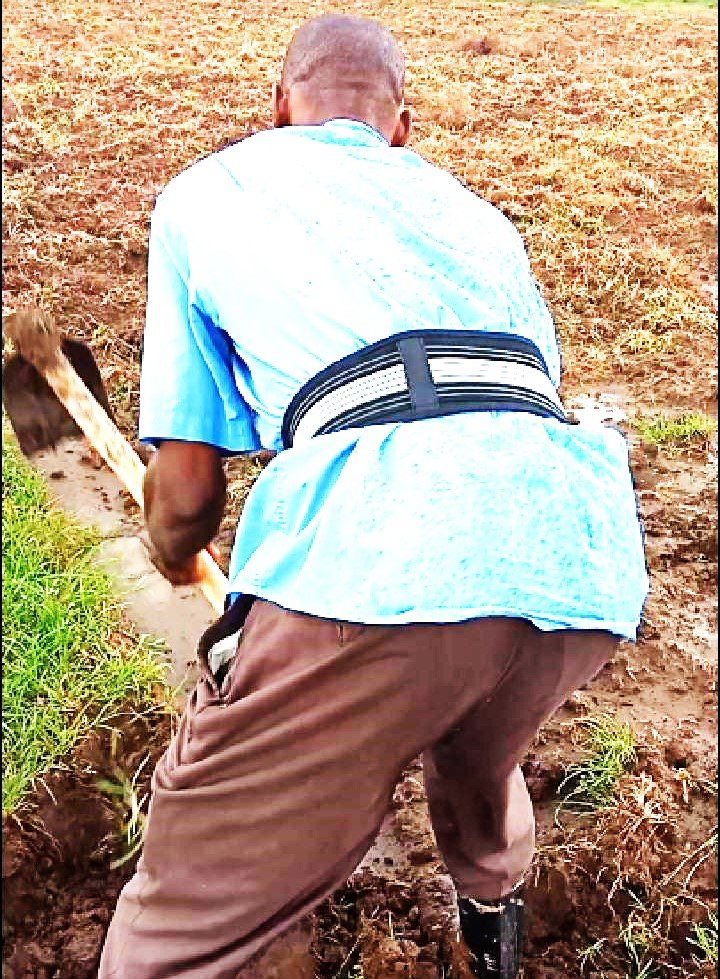Why This Belt is the Best Alternative for Lower Back Pain Sufferers
Sacroiliac sciatica is a specific kind of lower back pain that stems from inflammation or dysfunction of the sacroiliac joint, a critical structure connecting the spine to the pelvis. The sacroiliac joint, although not a frequently discussed anatomical feature, plays a crucial role in bearing the load and distributing weight between the upper body and the lower limbs. When this joint becomes dysfunctional, it can lead to sacroiliac sciatica, characterized by radiating pain that travels down the sciatic nerve, potentially affecting the buttocks, thighs, and even extending to the feet.
The causes of sacroiliac sciatica can vary, but common triggers include trauma, arthritis, pregnancy, or degenerative joint diseases. Key symptoms include sharp, stabbing pain in the lower back, buttocks, and legs, which may be accompanied by numbness or a tingling sensation.  This differs significantly from other types of lower back pain, such as lumbar disc issues or muscle strain, where the pain typically remains localized in the lumbar region.
This differs significantly from other types of lower back pain, such as lumbar disc issues or muscle strain, where the pain typically remains localized in the lumbar region.
Notably, understanding the sciatic nerve and its pathway is fundamental. The sciatic nerve is the longest and widest single nerve in the body, running from the lower spine through the buttocks and down each leg. Any compression or irritation of this nerve results in the characteristic symptoms of sciatica.
Lower back pain, including sacroiliac sciatica, is alarmingly prevalent and poses substantial impacts on daily life, productivity, and overall well-being. Statistics suggest that nearly 80% of individuals will experience lower back pain at some point in their lives, making it a leading cause of missed workdays and diminished quality of life. This persistent pain can reduce mobility, hinder daily activities, and contribute to psychological stress, painting a clear picture of the essential need for effective relief methods.
This foundational understanding underscores the relevance of exploring sacroiliac sciatica pain relief as a viable alternative for those suffering from lower back pain, setting the stage for the subsequent discussions on managing and alleviating this condition.
Conventional Treatments and Their Limitations
Conventional treatments for lower back pain encompass a variety of approaches, including medications, physical therapy, surgery, and chiropractic care. Painkillers, such as nonsteroidal anti-inflammatory drugs (NSAIDs) and opioids, are frequently prescribed to manage the immediate discomfort. However, these medications often come with significant side effects. NSAIDs can lead to gastrointestinal issues and cardiovascular problems, while opioids pose risks of addiction and long-term dependency.
Physical therapy is another widespread treatment for lower back pain, focusing on exercises and stretches aimed at strengthening the back and improving flexibility. Despite its benefits, physical therapy requires consistent, long-term commitment and may not offer immediate relief, which can be discouraging for those in severe pain. Additionally, the effectiveness of physical therapy can vary greatly depending on the individual’s condition and their adherence to prescribed exercises.
Surgical interventions, including spinal fusion and laminectomy, are considered for severe cases when other treatments fail. While surgery can provide significant relief for some, it is invasive, costly, and carries risks such as infections, nerve damage, and prolonged recovery periods. Moreover, surgery does not guarantee relief and may necessitate further operations or ongoing medical care.
Chiropractic care offers a non-invasive alternative, focused on spinal adjustments and manipulations to restore proper alignment. While this method can provide temporary relief, its efficacy is often debated within the medical community. Patients might need frequent visits to maintain the benefits, leading to cumulative costs and inconvenience.
From a patient’s perspective, the limitations of conventional treatments contribute to a cycle of frustration. Despite investing time and resources, many find themselves without lasting relief, prompting a search for new solutions. The potential side effects and the lack of long-term efficacy highlight the need for alternative options that address the root cause of pain without onerous side effects. This ongoing struggle underscores the importance of exploring more sustainable and holistic approaches for sacroiliac sciatica pain relief.
The Science Behind Sacroiliac Sciatica Pain Relief Belt
Effective management of lower back pain, particularly sacroiliac sciatica pain, hinges on a thorough understanding of the underlying physiological mechanisms and targeted treatment techniques. Sacroiliac sciatica pain relief integrates a combination of alignment correction, muscle strengthening, and nerve decompression to maximize patient outcomes.
Alignment correction focuses on repositioning the sacroiliac joint to its proper alignment, aiming to alleviate the stress on surrounding tissues and nerves. Misalignment of the sacroiliac joint can lead to an imbalance that triggers pain sensations and restricts mobility. Techniques like manual adjustments, guided physical therapy, and the use of support belts have shown significant promise. According to a study published in the Journal of Physical Therapy Science, sacroiliac joint manipulation provided substantial pain reduction and improved functional movement in participants suffering from lower back pain.
Muscle strengthening is another critical component, particularly targeting the muscles around the pelvis, hips, and lower back. Strengthening these muscles helps in establishing stability and support for the sacroiliac joint, thus minimizing undue strain and reducing the likelihood of nerve compression. Exercises tailored to enhance core stability, along with targeted rehabilitation programs, have demonstrated notable improvements in pain levels and functional capacity. Research published in the Clinical Journal of Pain supports this approach, highlighting the role of targeted muscle strengthening in reducing chronic lower back pain symptoms.
Nerve decompression techniques aim to alleviate the pressure on the sciatic nerve, which can be a major contributor to pain. This can be achieved through minimally invasive procedures like corticosteroid injections, nerve blocks, or radiofrequency ablation. These methods work by reducing inflammation and disrupting pain signal transmission. The efficacy of nerve decompression has been well-documented, with numerous studies underscoring its success in providing rapid pain relief and improving patient quality of life.
Expert opinions further solidify the credibility of sacroiliac sciatica pain relief. Dr. Emily Vance, a board-certified orthopedic specialist, emphasizes the holistic approach: “Combining alignment correction, muscle strengthening, and nerve decompression provides a comprehensive treatment strategy that addresses the root causes of pain, offering a superior alternative to conventional methods.”
Overall, sacroiliac sciatica pain relief stands out as an effective treatment avenue due to its multifaceted approach that leverages scientifically-backed methods to ensure optimal patient outcomes.
Patient Success Stories and Benefits of Sacroiliac Sciatica Pain Relief
For individuals plagued by chronic lower back pain, sacroiliac sciatica pain relief has emerged as a beacon of hope. Numerous patients have shared their transformative journeys, shedding light on the profound impact of these treatments. One such success story comes from Jane, a 45-year-old office worker, who had battled debilitating lower back pain for years. She describes her experience with sacroiliac sciatica pain relief as “life-changing,” noting that she went from restless nights to enjoying her favorite activities pain-free. This non-invasive treatment significantly improved her quality of life, allowing her to resume an active lifestyle without the constant fear of pain.
Another compelling account is that of Mark, a retired athlete, who found himself struggling with mobility issues due to severe sacroiliac sciatica pain. Conventional treatments offered him little solace, but sacroiliac sciatica alleviation techniques provided remarkable relief. Mark credits this approach with restoring his ability to engage in daily exercises and hobbies that he had long abandoned. His story exemplifies how effective sacroiliac sciatica pain management can be, especially for those who have grown disillusioned with traditional methods.
The benefits of sacroiliac sciatica pain relief extend beyond mere symptom alleviation. This treatment modality is recognized for its cost-effectiveness, presenting a viable alternative to expensive surgeries and long-term medication regimens. Moreover, the non-invasive nature drastically reduces recovery times and eliminates the risks associated with surgical interventions. Patients often report a swift improvement in their overall well-being, translating to enhanced productivity and a renewed ability to engage with their social environments.
When considering the overarching benefits — from the cost savings to the transformation in daily living — sacroiliac sciatica pain relief stands out as a leading choice for lower back pain sufferers. These patient success stories underline the effectiveness and life-enhancing potential of sacroiliac treatments. For those seeking a reliable and transformative solution, exploring sacroiliac sciatica pain relief offers a promising path to a pain-free life.






